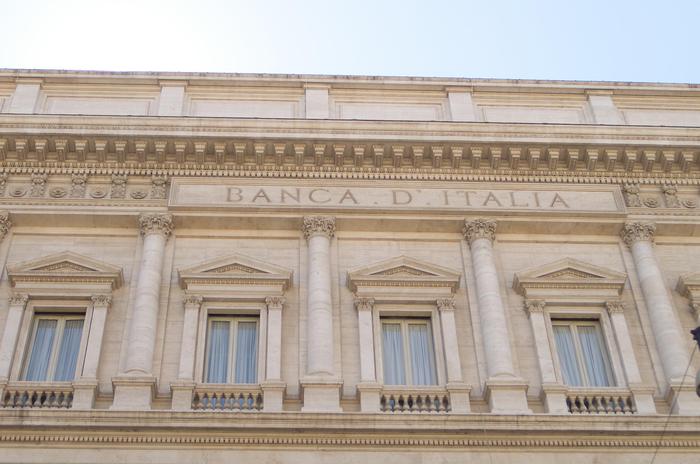Homes, roofbar and amenities.
Classic offices or as coworking.
The
Tornquist building
is preparing to regain its shine and give new uses to its ten floors.
It will be with a project that will transform the
former bank headquarters
into a place to live, drink and admire the Buenos Aires domes, after decades in which
it was vandalized from the inside and admired from the outside.
It is that the building of Miter 531 impresses.
It bears the signature of the architect
Alejandro Bustillo
, the same one who designed the
Llao Llao in Bariloche and the Casino in Mar del Plata.
Its façade is withdrawn so that the monumental nature of the work can be seen.
Its portico is supported by four columns crowned by large sculptures.
Its roof lets you see the best Buenos Aires domes.
All just two blocks from Plaza de Mayo.
But, after its closure at the beginning of the century, its interior became a mystery.
Its years in disuse portended a disaster.
Clarín
enters and sees in situ what the current state of the place is and how the work will be deployed, which will be financed with a
plan from the Buenos Aires Government to reconvert the Microcentro.
It is expected to start in the last quarter of this year and end in late 2024 or early 2025.
"It is a complex but very noble building. The biggest challenge is the majesticity of its spaces. But of its 21,000 square meters, we can only take advantage of a part. The technical rooms and circulation are very popular. These offices cannot be touched either", warns the architect Christian Oets as he opens the door to the board meeting room on the first floor, covered in boiserie brought from France.
The terrace of the Torquinst building and its privileged view of the City.
The contrast with the damage suffered by the roofs for so many years of closure.
Photo;
Lucia Merle
The project, plant by plant
The
Tornquist bank
operated on the ground floor and the two mezzanines, where there will now be a health, cultural, gastronomic center or some other activity considered strategic for this area of the City.
This is the best-maintained sector:
glazed revolving door with wooden frames,
original light fixtures, reliefs of Doric columns and allegories by the Italian artist Troiano Troiani.
From the second to the tenth floor there will be homes,
just as it was when the building was inaugurated in 1928. "Those floors were for rent, then the divisions were torn down and offices were made. Now they will be subdivided again and be apartments, perhaps Airbnb," he
explains
. oets.
Here you have to force your imagination more to think about how they would look like: for now they are free plants with gutted ventilation pipes, cracked ceilings, rubble from which plants are "born".
The walls are peeling
.
There is ripped woodwork, water leaks, original hardwood floors that are stained, cracked, or covered in carpet.
Oets makes use of his architectural skills and projects.
The interior halls of the former Torquinst Bank building.
Photo Lucia Merle
"There will be
180 functional units.
135 with one room, 45 square meters each. 25 with two rooms, 67 square meters each. 13 with three rooms, 130 each. Six duplexes and one triplex. Here, where a duplex goes,
there was the City Club restaurant.
It had a double-height room," says the architect while pointing to a hole in the white wall that reveals the previous, bluish construction.
Then he goes up to the next floor to show where the gym, pool and solarium will be.
One more floor and you can already imagine what the two-level roofbar will be like to be built on the terrace and patio, which will maintain the
Spanish neocolonial style that Bustillo had given it:
horseshoe arches and semicircular tiles.
But what is most breathtaking is
the panorama
.
On one side, the Güemes gallery, the first Buenos Aires skyscraper.
On the other, the domes of the Legislature, the Equitativa del Plata, the former Bank of Boston and the Bencichs.
The other challenge is to put the building in Code and at the same time preserve it.
It is necessary to build two cores of emergency stairs, which will force the slab to be drilled on both sides, since the central staircase was not made as an escape route.
The units must also be subdivided into the free floors, create fire protection installations and modify the basements, where the safe deposit boxes and the Trocadero restaurant were.
There will be installed
garages and a laundry.
The terrace of the Torquinst building and its privileged view of the City.
The contrast with the damage suffered by the roofs for so many years of closure.
Photo;
Lucia Merle
Heritage
The heritage value of the building has been recognized for decades.
In 2000 the Tornquist was proposed to Unesco to be declared
a World Heritage Site,
an initiative that did not bear fruit.
But two years later it became
a National Historical Monument
and in 2008 its structural protection was declared.
The valuation analysis of the façade was made by the architect Marcelo Magadán, former member of the National Commission of Historical Monuments, Places and Assets and restoration advisor for this building.
The Tornquist has structural protection, so
its façade
, its patios and the different premises inside must be preserved.
The best-protected elements of the building are on the ground floor and first floor, "where the boiserie, the light fixtures, the fireplaces, some shelves are preserved," observes Magadán.
On the outside, the other elements to safeguard are the walls that make up the patios,
the façade and the buildings on the roofs.
Perspective of the Tornquist Building published in "Architecture Magazine" of June 1930, edited by the Central Society of Architects
What is the space that offers the most challenges at the heritage level?
Magadán responds: "All those that survived the various renovations that it underwent over time with the change of owners, because
the basic use as offices and bank headquarters was maintained over time."
It is that, except for some exhibitions, the first floors were always used by banks: the building was inaugurated in 1928 as Banco Tornquist, only eight years later to merge with Banco Español del Río de la Plata.
In 1990 it would become the headquarters of Banco Crédit Lyonnais and later Supervielle.
Since 2000 it would be Rio.
Advertisement for the Tornquist building in La Nación, Buenos Aires on May 24, 1928
Visiting the areas that are best preserved is a trip to
the luxuries of other times.
"The ceramic bricks of a large percentage of its walls and its exterior façade were imported from Sweden. And part of the walls, columns and other decorative details were finished with 'Piedra París' coatings. Most of the floors were covered with marbles" details Magadan.
the unsaleable
There were several attempts to sell the building.
In 2005 and 2006, Banco Río itself put it up for sale three times, in which it was offered for
between 7.5 and 9 million dollars.
In 2016, the real estate company Antúnez Vega tried to market it for 30 million dollars and, some time later, LJ Ramos began to promote it.
Three years later, Antúnez Vega put it up for sale again, but at a slightly lower price, 26.5 million dollars.
Difficulties in selling it left the building
empty for too long.
Fortunately, its façade was lit up a decade ago.
And there were some exhibitions that brought some order and life back to it, such as Casa FOA in 2013 or an exhibition of artistic installations organized by the Siemens Foundation and the City Government in 2014. But that did not save Tornquist from deteriorating its interior
, vandalized, wasted.
Flats left unused in the former Torquinst Bank building.
Work will begin to convert them into apartments.
Photo;
Lucia Merle
The final destination came hand in hand with the reconversion plan of the Microcentro of the Ministry of Economic Development of the City, which includes a special credit line from Banco Ciudad and gives developers the chance to have a percentage of investment taken
from Gross Income Tax account.
The limit range of recovery can be up to 60%.
The Tornquist project has already been pre-approved by the ministry and the work permit is managed at the General Directorate of Works and Cadastre Registry (DGROC) with "open rectification", that is, with the sending of technical observations that must be complied with so that finish the process approval.
SC
look too
They enable the construction of a park and a neighborhood in the former Ciudad Deportiva de Boca
Oblivion and abandonment: the chapel that is a hidden treasure of the City and is used as a warehouse for a hospital









